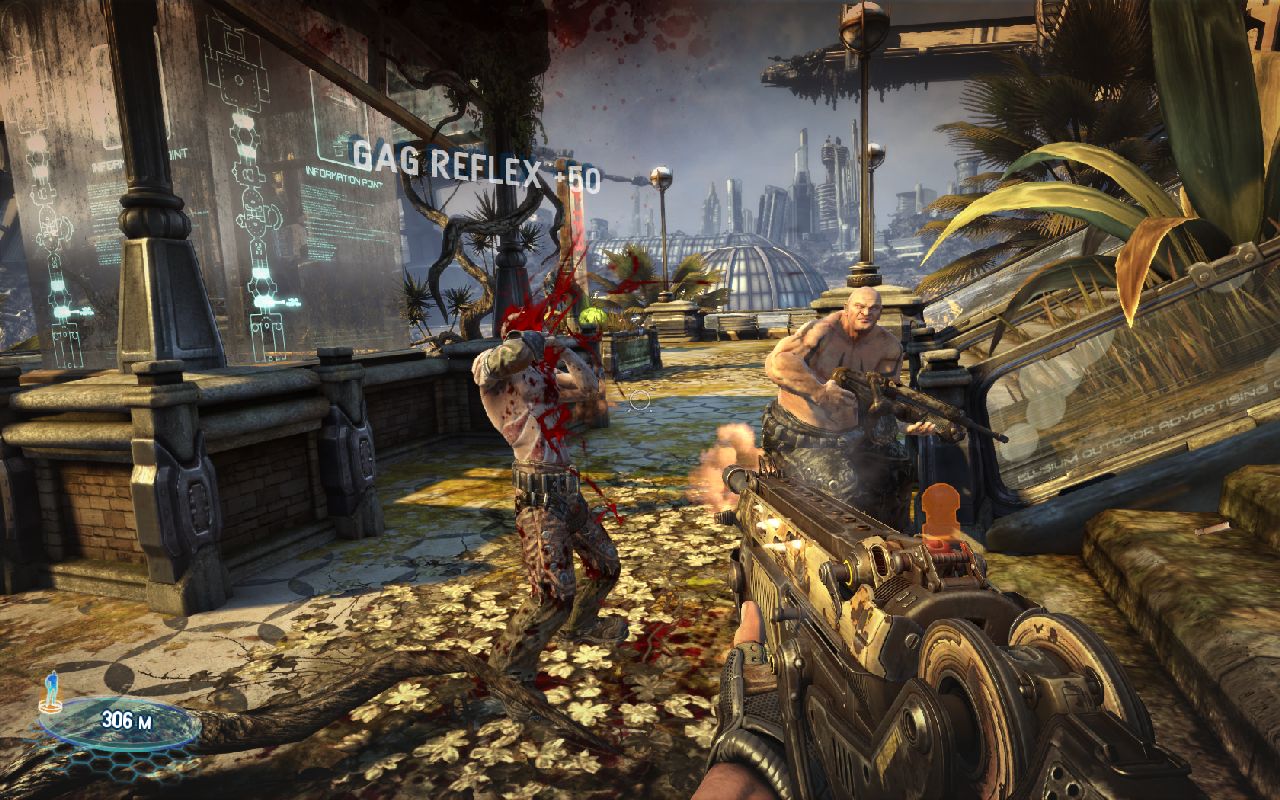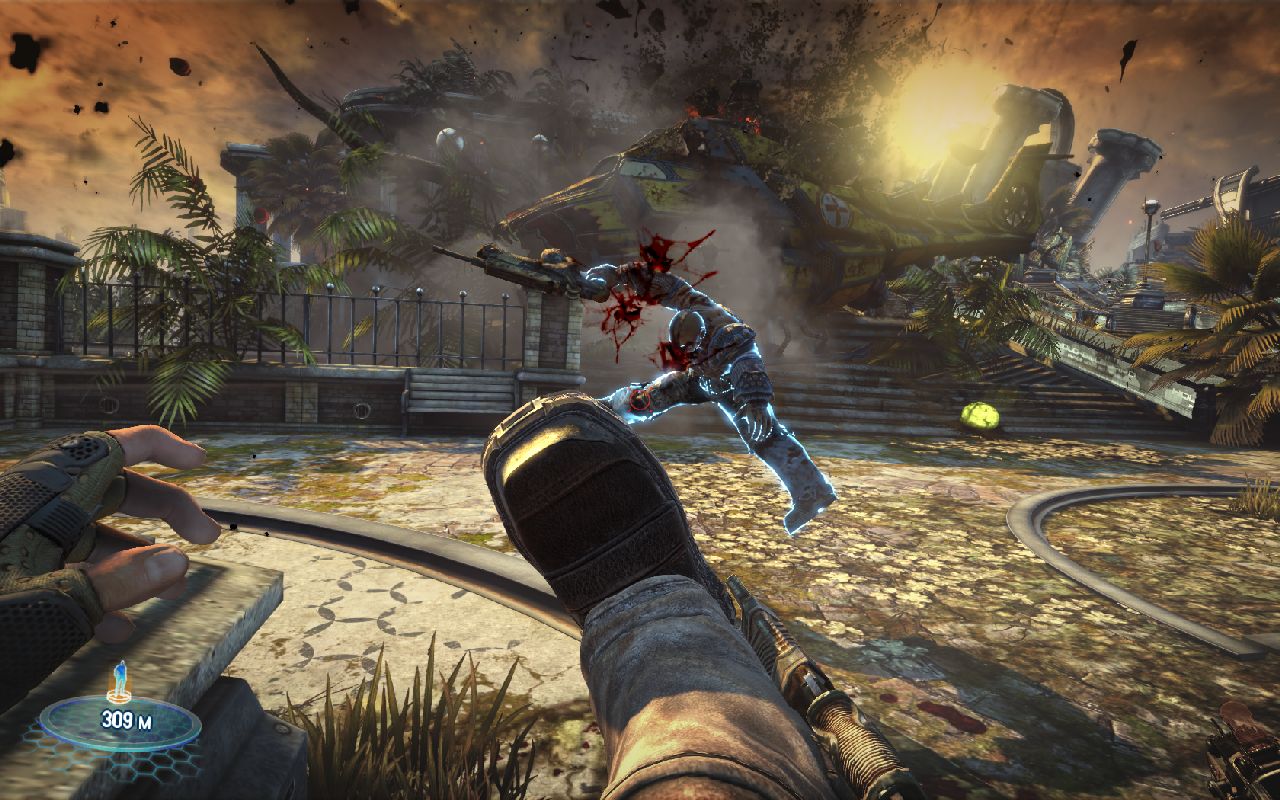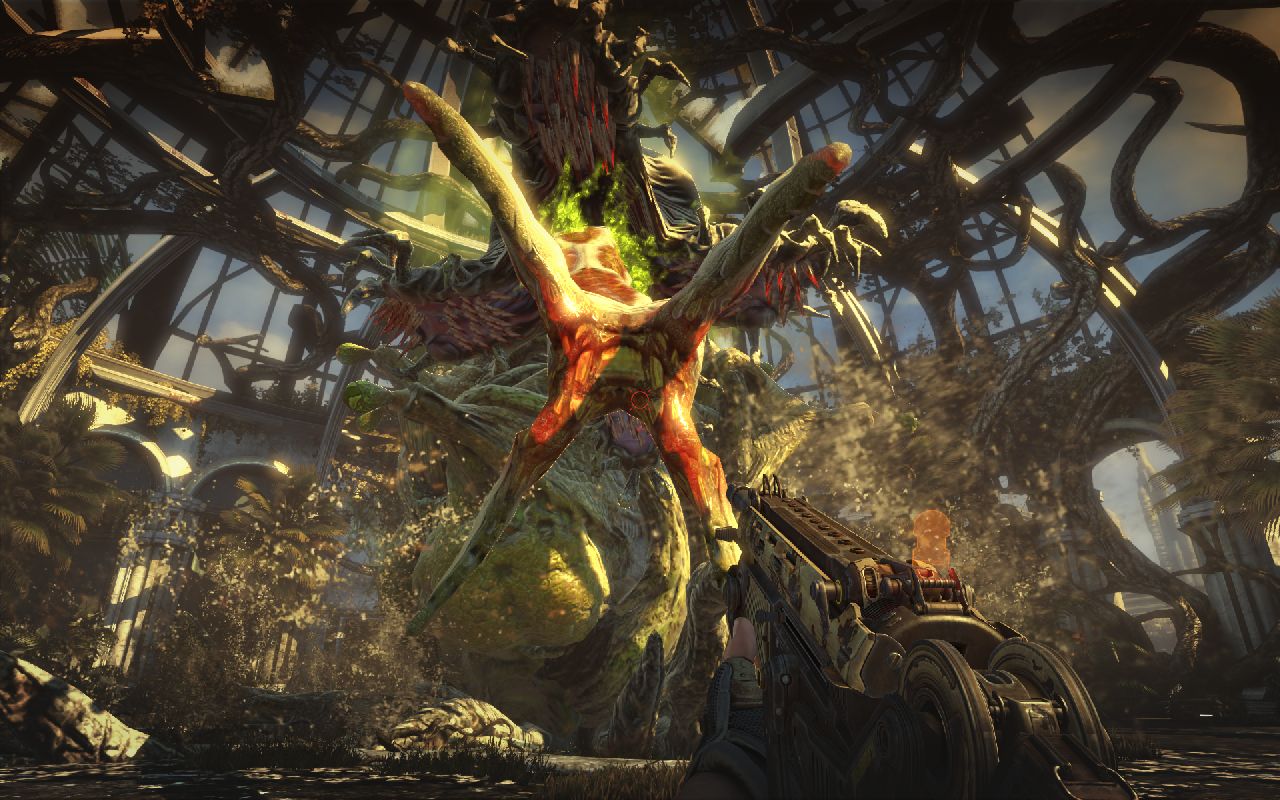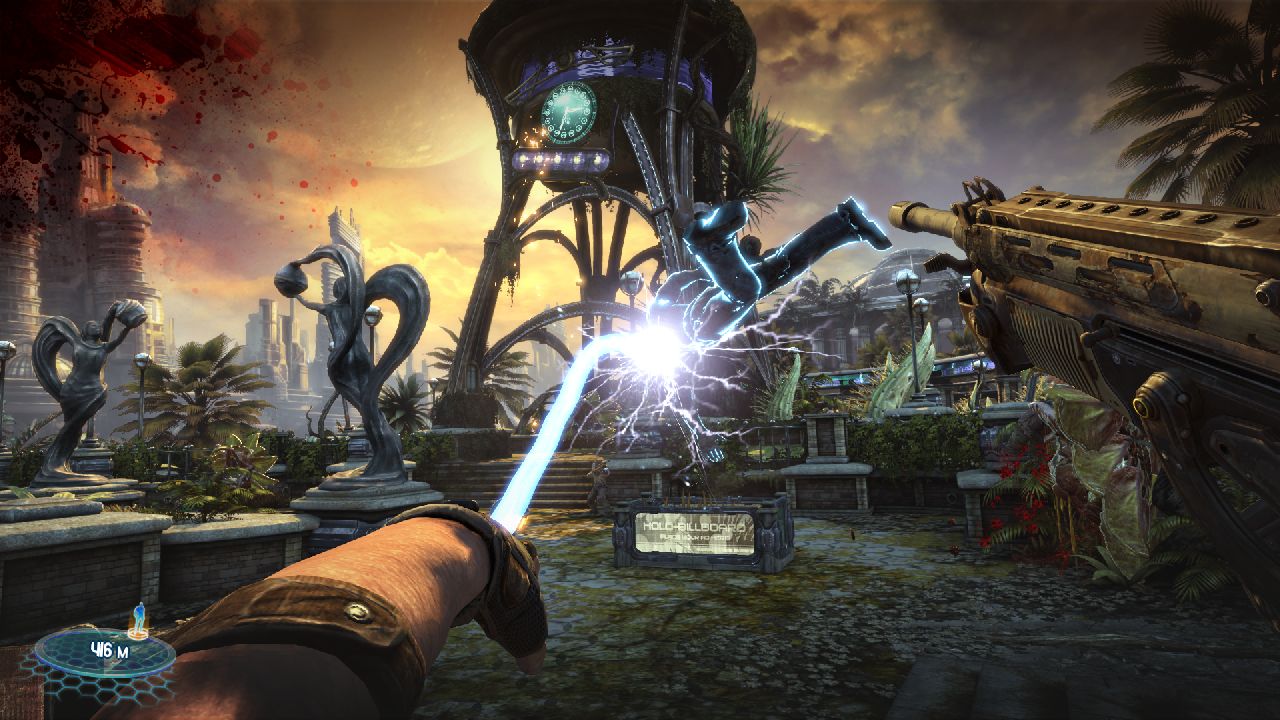Bulletstorm Review
Back in April of 2004, People Can Fly, now a subsidiary of Epic Games, released their debut title Painkiller, an overtly old-school FPS inspired by the likes of Doom and Quake. It is almost seven years later, and once again, People Can Fly is releasing a first-person shooter that feels like a bizarre hybrid of modern and classic shooter mechanics and style. Like any new IP, Bulletstorm may be riding on the coat tails of larger, more established series like Gears of War and Unreal Tournament, but at the end of the day, can it truly stand on its own?

Bulletstorm puts you in command of Grayson Hunt, a meat-headed space pirate who, as unveiled in the game’s prologue, discovers along with his then-human but soon-to-be-cyborg teammate Ishi that the people they have been to commissioned to kill, whom they thought were mass murderers, traitors, and killers, were innocent civilians, reporters, and humanitarians that their commanding general simply wanted killed. From there, Bulletstorm becomes a standard revenge story with Gray and Ishi fighting their way through a planet full of dangerous flora, deadly locals, and increasingly dangerous surroundings in order to get back at the General for what he made them do. On its own, this story could have worked (although it may have come off as a bit cliché) but coupled with the game’s considerably more dominant humor and never-to-serious attitude makes the storyline feel a bit off, something just far too serious for the rest of the game’s content.
Besides the FPS standards of running, shooting, and reloading, Bulletstorm has a lot of very interesting mechanics. A Duke-Nukem-esque kick attack, not only propels enemies in the opposite directions but, through your personal time displacement field (something never really brought up or explained in the singleplayer campaign), sends them floating in slow motion, giving you time to accurately place a few rounds into their head, butt, or balls. Most enemies can take a good three or four kicks before dying so you’ll quickly find yourself stringing kicks together to get enemies exactly where you want them, whether that be a giant spiked cactus or a group of exposed wires. In my time with the game, the kick became my primary weapon. It, coupled with the slide kick that lets you quickly burst towards enemies while dodging their gunfire, becomes the quickest way to put your enemies out of commission.

In addition to his hefty combat boots, Gray is also equipped with a “leash,” a laser whip that can be unfurled at any moment and used to pull objects and enemies around the environment. The leash’s charge shot called the “thumper” allows you to slam the ground, sending all of the enemies nearby floating up towards the heavens in wonderful, time-displaced slow motion. It’s the opportune time to tie a mine flail around an enemy’s neck or shoot a firework up their bum. Despite the coolness of the leash, I found myself only using it when forced to by in-game instructions, normally in order to progress further through the level. I always defaulted to the kick and slide as they allow you to dodge enemy fire and immobilize an enemy in a matter of moments while the leash exposes you to enemy gunfire and is hard to pinpoint on the exact enemy or object you are looking to leash. If a Bulletstorm 2 ever comes to be, the leash is one of the aspects I would most like to see worked on, perhaps with the inclusion of swinging, dual-leashes allowing you to slam objects or enemies together, as well as some other force-field-like effects that the leash could reasonably exist within the confines of the story’s science.
All of these different abilities play into Bulletstorm’s most unique aspect: the Skillshot system. By killing enemies in creative, interesting, or extremely specific ways, you are rewarded with a larger and larger number of skill points. These skill points can then be used at different drop kits throughout the singleplayer campaign to purchase access to new weapons, upgrade the weapon’s ammo capacity, unlock their charge shots, and even buy ammo, charge shots, and thumper charges. It takes the satisfaction of other shooter XP systems like those popularized by the Call of Duty series, compounds it with a massive list of complex achievements, and then rewards you directly for your efforts by giving you more in-game currency and therefore more ammunition, stronger weaponry, etc.

It is all the different levels of this mechanic that is its greatest strength. While the simple act of achieving these special skillshots may be reward enough for some players, the fact that the amount of currency you have to spend in game and essentially better your situation means that even those players who would otherwise stay within their game playing comfort zone to go out of their way to seek these wild and crazy kills. Beyond anything else, this mechanic is Bulletstorm’s key dynamic as an IP.
In terms of multiplayer, Bulletstorm is a bit lacking. Anarchy mode, a four-player cooperative mode that forces you to kill not only creatively but also in tandem in order to progress through each wave, is a blast to play with friends and something that really embraces all of Bulletstorm’s unique mechanics in a way that just feels right for multiplayer. Aside from this mode though, there is little more than the leaderboards tracking your scores and the scores of your friends in the game’s Echoes stages, which are portions of the singleplayer campaign cut down into individual short levels allowing for quick replayability. Playing through an Echo is one-part time trial and one-part arcade high-score shooter, and in this way, it stands out from game modes offered by other FPSs. My only fear is that it will really only appeal to Bulletstorm’s most diehard of players while a majority of players (myself included) will find their boredom growing after only a few attempts at each level.

All things told, Bulletstorm is a very fun summer game that just happened to drop at the beginning of the year rather than the middle of it. It’s got explosions, crude humor, massive set pieces, crazy weapons, and massively-muscled bros more akin to Duke Nukem than Marcus Fenix. It’s a singleplayer campaign that is best enjoyed over a few sittings when you are just looking to relax, multiplayer matches best played with friends, and a universe that manages to borrow heavily from not only Epic’s other games but some of the classic 90s shooters of yore and yet still stand alone as a unique and visually interesting setting. There are problems here or there: an oddly-serious storyline, extremely off-putting cutscenes, and moments of difficulty rubber banding that’ll have you dying instantly one time and then breezing through the next. Bulletstorm is a game best enjoyed as quickly and as carelessly as the game’s style demands it to be. Don’t think too much, just go with the flow and shoot a guy in the crotch already.
